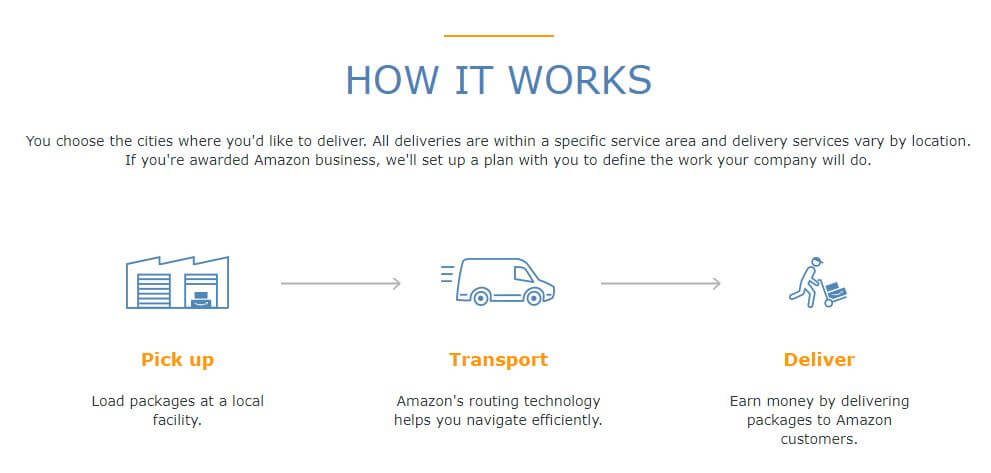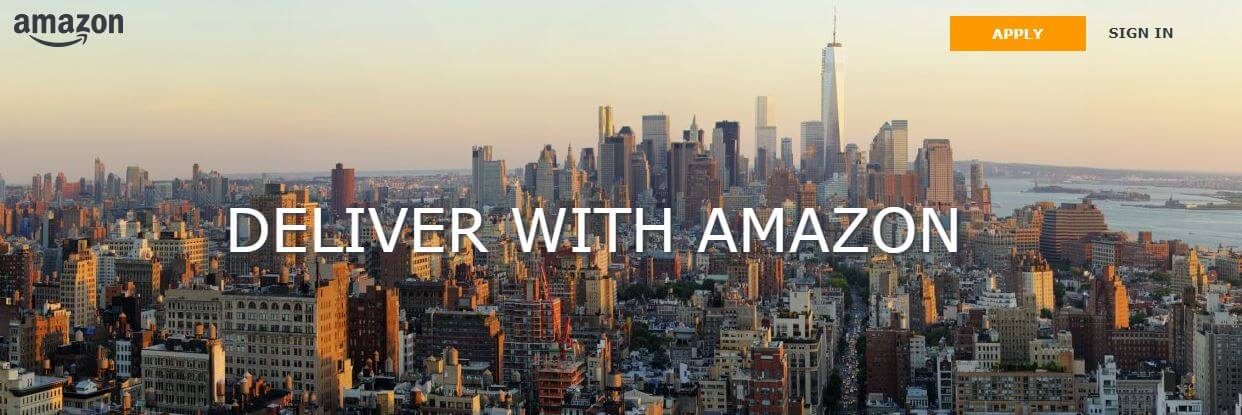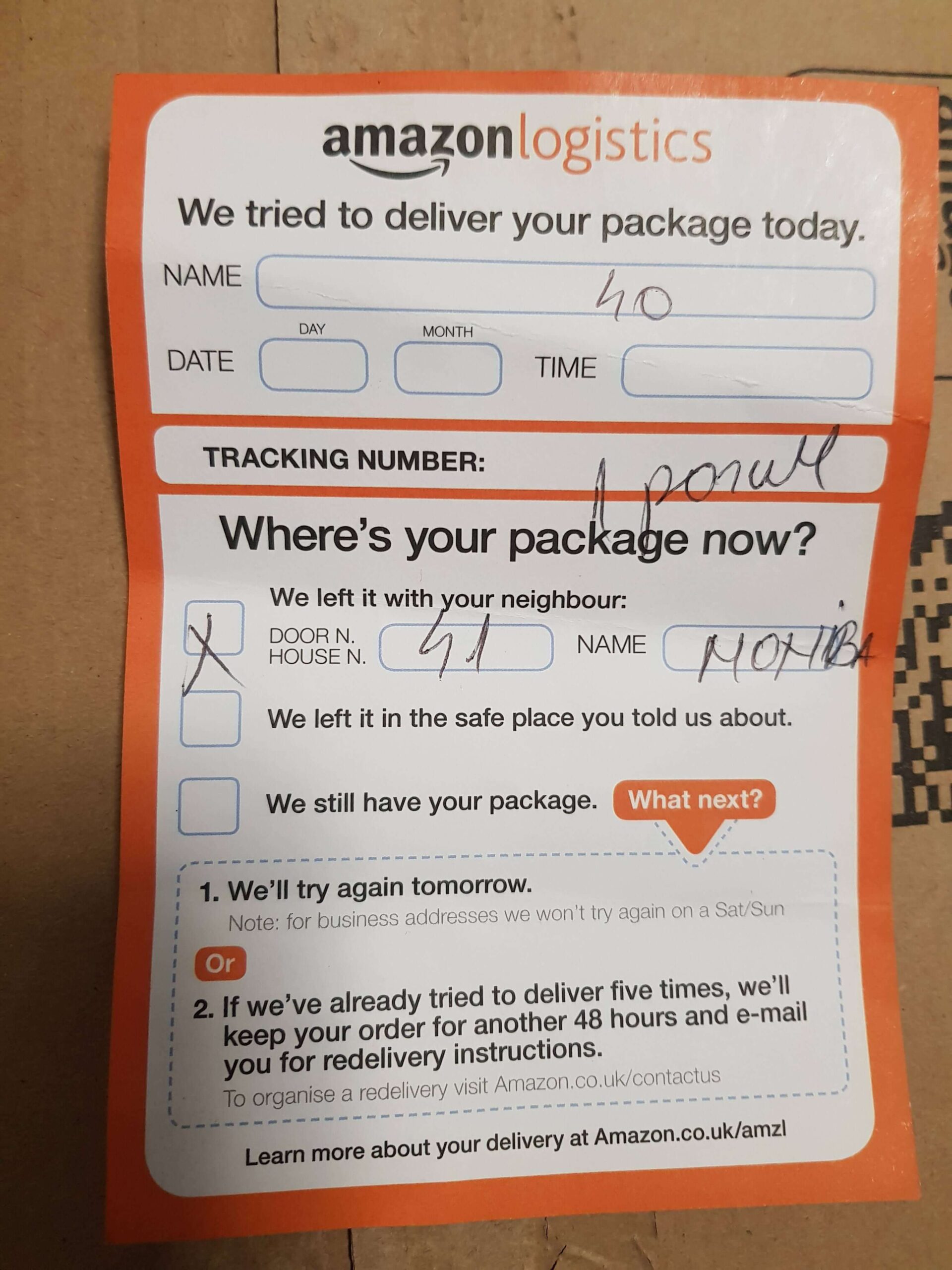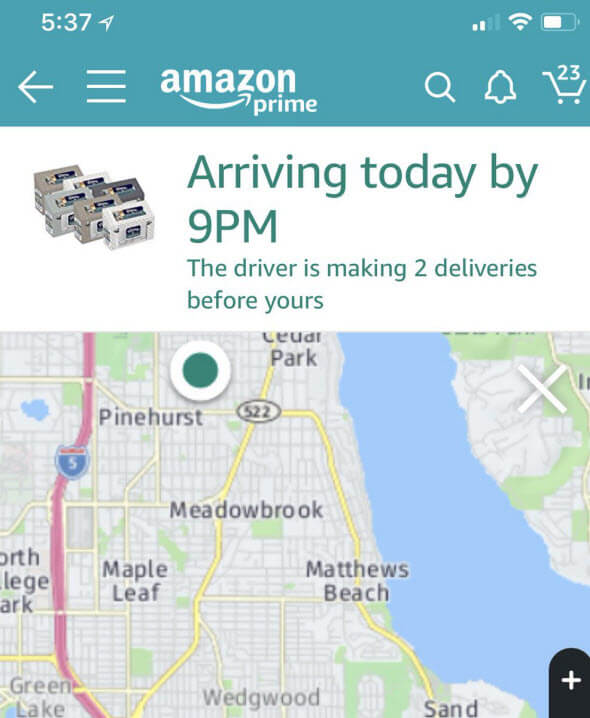The Amazon Logistics infrastructure can either help or hurt third-party sellers, drastically improving their ability to serve customers and deliver goods or significantly hurting their feedback scores and subsequently their online reputation.
The result varies by seller, and it really comes down to how each seller utilizes the Amazon Logistics program, as well as how proactive they are in their approach.
Do you want to make sure you’re getting the most from Amazon Logistics, without hurting your sales or reputation in the process?
Let’s look at Amazon Logistics from all angles.
What is Amazon Logistics?
Amazon Logistics is a shipping and delivery service meant to complement existing providers like UPS, USPS and FedEx.
It offers 7-day and same-day delivery options, and it utilizes a host of third-party logistics partners across the country to make it happen – including walkers, bicyclists and motorcyclists in some areas.
Amazon has certain stipulations for these third-party providers (regarding licensing, vehicle sizing, safety training and insurance), but it’s important to remember these are not Amazon employees.
They are separate logistics providers contracted to pick up deliveries at Amazon warehouses and sorting centers for distribution. They use Amazon tech to guide their deliveries, but they enjoy flexible schedules and pick up shipments at-will.

Pros and Cons of Amazon Logistics for Third-Party Sellers
The Amazon Logistics program leaves a lot of room for error.
Since logistics providers aren’t Amazon-employed per se, they don’t have the same skin in the game as those in the Fulfilled-by-Amazon model do — and that have serious implications for an Amazon merchant.
CON: For one, late or mishandled deliveries can impact a seller’s feedback score. Not only does this score play a role in whether customers decide to buy from that seller or not, but it can also influence the merchant’s ability to win the buy box – a crucial placement when multiple sellers offer the same product.
CON: Sellers also have no control of Amazon Logistics. They can’t pick and choose which providers they want to use – even if they’ve been burned by one before.
The entire logistics chain is operated without seller input, putting both their shipments and their reputation on the line. With the option to self-fulfill orders still on the table (giving you full control of every step), this can be pretty frustrating for many sellers.

PRO: Still, there are advantages to Amazon Logistics. It allows you to take advantage of Amazon’s cutting-edge programs like Lockers, Fresh, Flex and Prime Air, and it gives you the chance to offer expedited, same-day and even two-hour shipping in certain geographic areas.
PRO: Amazon Logistics can also offer an advantage in times of high shipping volume when services like USPS are backed up and bogged down.
Amazon Logistics Tips & Tricks
Since the big issue with Amazon Logistics is the potential impact it can have on a seller’s feedback score, being proactive with customer communication is key.
Sellers need to be in touch with customers to circumvent any potential bad feedback before it happens – and that takes a little finesse and some nuanced timing.
Specifically, sellers will want to:
Message them right off the bat – Get in contact with the customer right after they’ve made an order, thank them, and let them know you’re working on it. Send them another message with the tracking link once the package has been picked up, and keep the lines of communication open.
If the customer has already talked with you once, twice or even three times over the course of the transaction, they’ll be more likely to come to you directly with any problems, rather than heading straight toward public feedback.
Send a message requesting feedback a few hours after the “estimated” time of delivery -Amazon Logistics also doesn’t provide sellers with exact delivery times, which can make it hard to reach out and seek customer feedback.
Sending a message too early could remind a customer that their package is delayed, while sending it too late may make a seller seem off their game.
Pro-tip: Keep an eye on the estimated delivery times, and send your message a few hours later, just to be sure it’s arrived. To be extra safe, consider waiting until just after 8 p.m. in the customer’s time zone – that’s typically when deliveries have stopped for the day from Amazon Logistics.

Be clear about your calls to action – Instead of saying “I’d love to hear your feedback” or “Share your thoughts on our transaction,” be more direct about what you want. “Give us a five-star rating” using this link or “Click here to rate your transaction five stars.” Make what you want them to do easy and obvious – and don’t offer other options.
The key is to head-off bad feedback before it can happen.
Let the customer know you’re there to help and that you’re willing to make an unsatisfactory experience right. Then, even if Amazon Logistics does flub the delivery window or make a mistake, your reputation – and feedback score – is in the clear.
More Amazon Logistics FAQ:
Since Amazon Logistics is a fairly new endeavor, many sellers are unclear about what it offers or what it means for their business and shipments.
Let’s take a look at some of the most commonly asked questions now:
Q. What happens if an Amazon Logistics driver arrives, but no one is home?
A. This depends on whether the shipment requires a signature or a person to be present. If these items aren’t required on the order, the driver will leave the package in a safe location on the porch or doorstep.
If someone must be present for the delivery, Amazon Logistics will leave a “We missed you” care and make two additional attempts in the coming days. On the third try, the delivery will be returned to Amazon and a refund will be issued to the customer.

Q. Can Amazon Logistics deliver on weekend?
A. Amazon Logistics is a 7-day, 8 a.m. to 8 p.m. delivery service. That being said, if a customer prefers to receive packages on the weekend, they’ll need to update their preferences in the “Manage Address Book” area of their admin settings.
Under “Optional Delivery Preference,” they can select weekend deliveries as their preferred method of shipment.
Q. How can I make sure my customers are up to date on their Amazon Logistics shipments?
A. Communication is key. Send them the tracking link once the shipment has been picked up, and encourage them to sign up for Shipment Updates via Text within their admin account if they’ll be on the go during their delivery window.
A recent update to Amazon Logistics tracking also allows customers to get insights into their driver’s whereabouts using the “My Orders” area of their account. They should click on the order in question, and an “Arriving by DATE and TIME” will show, along with a map of their geographic area.
There should also be an update on the number of deliveries in line before theirs (if the shipment is currently out for delivery.) Updates like “The driver is making 2 deliveries before yours” can help them hone in on what general time frame their package might arrive in.

Be sure to follow up when the package shows as delivered in your Seller Central dashboard and ask for positive feedback at that point.
If the customer hasn’t received the package despite it saying “delivered,” see the next question or contact Amazon support if it’s been more than 36 hours.
Q. What do I do if packages say delivered but the customer says it’s not there?
A. Amazon Logistics tracking isn’t updated in real-time, so if a customer can’t find a “delivered” package, there’s a chance it’s still coming in the next few hours. It also may have been left with a receptionist, at their building’s front desk or with neighbor if the customer wasn’t home.
Amazon has a whole video devoted to “Find a Missing Package that Shows as Delivered,” so be sure to watch it if this problem crops up and encourage your customer to do so as well.
Q. Should I be worried about Amazon Logistics drivers handling my shipments?
A. Though Amazon Logistics delivery providers do get paid by Amazon, they are not technically Amazon employees. They’re not eligible for Amazon employee benefits, nor are they kept to the same standards or schedule as an in-house employee would be.
As contractors, they’re also allowed to pick and choose their shipment pick-ups, and they enjoy a flexible schedule. These factors could put your shipments more at risk than a traditional FBA or self-fulfillment model would.
Amazon Logistics: The Bottom Line
Amazon Logistics is sure to be a game-changer – both for third-party sellers and third-party shipping providers alike. Make sure to be proactive in how you use the service, and use your Seller Central dashboard to stay in constant communication with your customers.
An open door policy is the best way to avoid potential bad feedback – and the implications that come along with it.
To learn more about Amazon Logistics or other shipping options, email [email protected].
You Might Be Interested In












